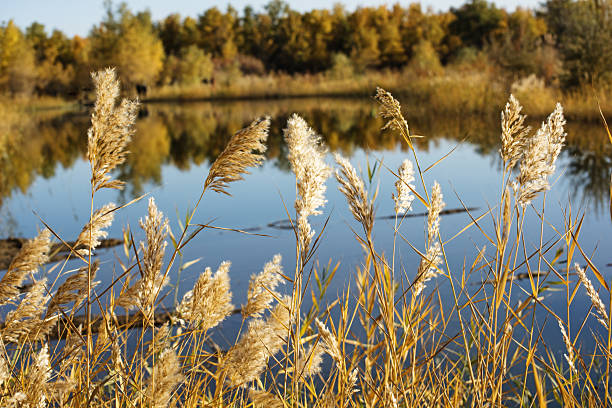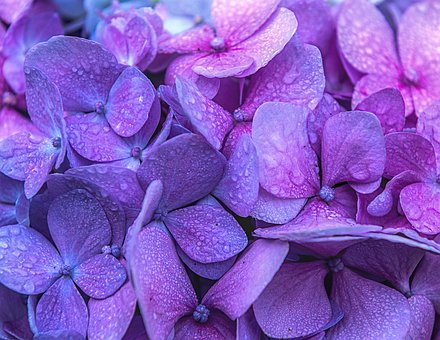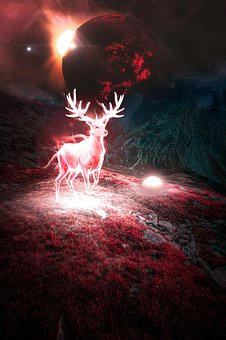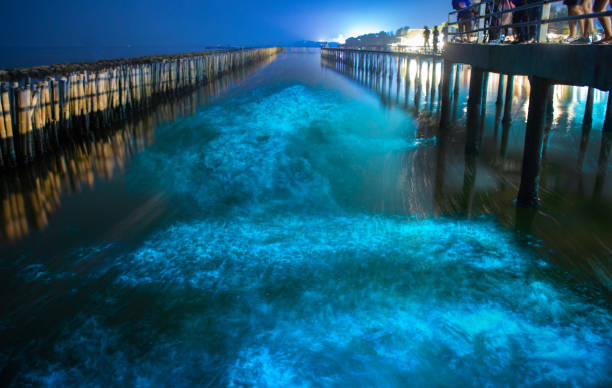Lilac Caldera
"The familiar sight of the Caldera filled me with an undying determination. The crystal clear waters, slate-grey rock formations, the lush greenery, and best of all, the purple lilacs. I was home." -Enigma of the Sun, ExplorerLife in Zealor is abundant. Beauty abounds everywhere one may look. However, no place in the entirety of Zealor provides more breathtaking magnificence than the Lilac Caldera. The area is situated within the Eclipse Mountains in the Tonaltz region of Zealor which expanses over the southwestern section of the globe. It is a place rich with tropical greenery, wildlife, and majesty.
Geography & Ecology
The Caldera is composed of an area of about 30 square kilometers sitting at an elevation of 6772 feet with some sections of the region going upwards of 8000 feet. Despite the tropical climate of the area, snow can be found upwards of 7600 feet (which accounts for a very small portion of the caldera). The geographical makeup of the region can be characterized as a highland lake with tropical environments surrounding it. The central part of the Caldera is the aforementioned lake taking up about a half of the total space in. The lake then exits the Caldera and descends the jagged slopes as a river before falling off of the peak entirely into the world below. The falls found in the latter portion of the river are dubbed the Equinox falls as its water freezes up during the winter solstice and evaporates during the summer solstice. Why this only happens near the falls is unclear, however evidence suggests it has something to do with the effects of temperature being felt harder in Tonaltz than anywhere else in Zealor.Geographical Variation (Biomes)
The varied geographical areas of the Caldera all comprise one of the most fantastical environments in all of Zealor (but definitely not the most).Slate Gorgelands
Spanning about 4 kilometers, the Slate Gorgelands are among the smallest biomes of the Caldera, but are also the most varied. The Gorge lands are comprised of jagged slate sticking upward from the base of the Caldera. These slate pieces create canyons in between them where scarce amounts of life can exist. These "Gorges" contain some water from the central lake, but are mostly made of barren stone. The peaks of the Slate spires are surrounded by a sort of Alpine mist. This mist allows flora and fauna to exist in these areas.
by Pixabay.com

by Pixabay.com
- Dew Squirrels: Flying squirrels which use airstreams from the canyon to fly in one place and have dew form on their wings.
- Hollowers: Ants which create their homes inside giant mushrooms, hollowing out the insides to make a base. If left unchecked by predators, these ants bases can span multiple giant mushrooms, and they can even start to eat through the canopy. Their main source of food is fungi.
- Rainbow-Winged Condor: This condor is an extremely large avian which resides above the canopy. This layer of the forest is characterized as being extremely hostile due to UV rays being reflected off of the heads of the top mushrooms. However, the RW Condor thrives here. Its white coat allows it to also reflect light (giving off a rainbow look), protecting it from the intense UV rays. The condor's feathers are also thick enough to protect it from the rays. The nests of these birds are made just under the canopy to provide the hatchlings time to grow their protective pelt. Once the hatchlings are old enough, they traverse the upper canopy, looking for prey. It is said you could go blind from looking at one of these birds
- Other flora: All manner of insects, arachnids, salamanders, flying rodents, frogs, snakes, and other amphibians, insects, reptiles, and the like can be found here.
- Lunar Moss: This moss is the only species of flora found in the Solar canopy and is vital to maintaining the balance of the ecosystem. This moss grows on the stems of fungi and is consumed by many species, keeping the flow of energy going.
Golden Plains
Spanning about 5 kilometers, the lakeside plains biome is found on the edge of the Caldera lake. This area is characterized by having the most hospitable environment of the biomes. The elevation in this area ranges from 6772 ft-6900 ft. The area is slightly hilly with few major changes in elevation. In the upper elevations of this region, ice sheets can form. However, this area is most distinctively defined by its flora and fauna which are some of the most interesting in all the caldera.
by Pixabay.com
- Caldera Lilac: These lilacs are the namesake of the caldera for good reason. Large patches of them are found all along the plains. They have been found to have a nectar that has powerful remedial properties, especially for fungal infections contracted by those who traversed the gorgelands.
- Shimmering Blades: This species of grass soaks up extra amounts of light from the sun due to its exposure. This gives the entire plains region a pleasant golden look that has been described to be more pleasant than the upper canopy of the gorgelands.

by Pixabay.com
- Thundeer: A species of deer which has adapted to use electric powers due to being in a perpetual state of vigilance from birth to avoid predators. These deer are the fastest terrestrial mammals in Zealor, and can only be found in the timeless highlands of the Amgine Archipelago.
- Root Rats: These small mammals dig dens under the plains and suck the nutrients from the grassroots. It is said wherever a brown patch of shimmering blades, there will be a root rat nest.
- Snow Pumas: These massive beasts stalk the ice sheets of the upper plains. While being extremally powerful, it is said that they have a somewhat just way of life. They never kill for sport and have even been observed peacefully interacting with a thundeer heard. These pumas are considered by many to be the rulers of the plains.
- Other Fauna: Some other notable species of fauna in the highlands include small birds, ibex, alpacas, birds of prey, and small to mid-sized lizards.

by Pixabay.com
Highland Jungle
Spanning about 6 kilometers, this biome takes up the most terrestrial space of any of the biomes. As the name suggests, this area is completely covered in a canopy of trees. Flora- Tropical shrubs, Carnivorous plants, and large trees.
- Avians: Different forms of birds ranging from the tiniest of species to rumors of those with a wingspan greater than the rainbow condor.
- Mammals: Dew squirrels, Bats, Leopards, Mountain Goats, monkeys, lemurs, and the elusive Phantom Orangutan.
- Reptiles: Lizards, snakes, and freshwater turtles varying in size.
- Insects: Unnervingly large species of ants and beetles.
- Arachnids and Arthropods: All forms of spiders, centipedes, and millipedes. None particularly large.
- Amphibians: Salamanders and some species of frogs.
Lake
The lake in the center of the caldera is an expansive freshwater ecosystem in and of itself. The depth of the water goes no farther than around 300 ft, and has many characteristics of lowland marshes (despite being so high up). This is thanks to the presence of midnight algae.
by Pixabay.com
- Midnight algae: A type of algae which glows in the dark and feeds of the energy from the sun. This algae has allowed life to develop within the lake and serves a similar function to the lunar moss of the Gorgelands.
- Other flora: Cattails and swamp grass around the shore.
- Shadow Crocodile: Existing within the lake, Shadow Crocodiles are arguably the most fearsome predator in all the caldera. They can grow up to 50 feet long and rule over the waters. The thing that makes them so fearsome is their ability to harness shadow flame from their scales. A sun dragon legend states that the Crocodiles once lived in the plains of the Caldera, but were then banished to the depths of the lake by a Snow Puma for committing an unspeakable act. It is thought that the envy from this banishment gave their species the power to harness shadowflame, an element manifested by envious Zealomancers.
- Other fauna: Many of the amphibians, reptiles, and insects found in other regions can be found within the lake. The water from the lake flows throughout the caldera to all the other biomes, allowing for a lot of biological overlap.
- The primary Sun Dragon settlement of Xchaltionac spans multiple islands in the lake. Bridges were built to allow safe passage over the lake.

by Pixabay.com
Sun Dragons
The Sun Dragons are a sentient species of lizard people which migrated to the Tonaltz region after the fall of the The Zealian Empire on the continent of Amgine. The 1000 year storm forced the Sun Dragons to migrate to the Caldera area due to rising water levels. This time was a dark period for the Sun Dragon empire. The people turned away from their roots of knowledge and innovation and embraced a dark ritualistic faith known as Zodosy. This religion involved many bloody traditions such as fights to the death for dominance, sacrifice, and a class system which favored those with bloodlust. It was a horrible time for the species until the explorer known as Pulshio visited them. Pulshio granted them the classical text dubbed "Beings Enlightened" which was written by Enigma of the Sun, a Sun Dragon explorer of antiquity. This writing opened the eyes of the Sun Dragons to what they could achieve with their sentience. They had forsaken the old ways of Zodosy and embraced the wisdom of sentience. The Sun Dragons worked to build a new capital on the lake as a testament to their newfound sense of purpose and freedom from the barbarism of the past. The old temples of the jungle were abandoned as the new capital of Xchaltionac was born. Today the Sun Dragons are living prosperous lives and building upon their past achievements. However, it is rumored that some villages within the jungle still practice Zodosy in secret as lights have been spotted in the distant trees.Symbolism
Sun Dragon society has taken many influences from the natural wonder of the caldera. One such influence is the prominence of the Lilac in their culture. The Caldera Lilac is special to the Sun Dragons as it was known for its medicinal properties. Sun Dragon women wear lilacs in their headdresses. Another form of symbolism from the Caldera is the story of Snow Puma and the Shadow Crocodile. This was a parable created by the Sun Dragons to teach children to be goodhearted, and has also been seen by some as an indirect reference to the abandonment of Zodosy.Conclusion
The Lilac Caldera is a highland tropical lake flanked by many beautiful environments. However, deep down it is so much more than this monotonous description. This caldera has been the home of the Sun Dragons for thousands of years, and has been the sight of much suffering and prosperity. The Sun Dragons feel a sense of purpose and history when looking out across the crystal clear waters. And why wouldn't they? The Lilac Caldera is one of the most astonishing, historic, pristine, and beautiful natural sights in all of Zealor.Specialized Species
Flora
- Caldera Lilac
- Golden Blades
- Lunar Moss
- Midnight Algae
Specialized Fauna
- Dew Squirrels
- Hollowers
- Rainbow-winged Condor
- Root Rats
- Thundeer
- Snow Pumas
- Shadow Crocodiles
Fungi
- Solar Fungi
Inhabitants
- Sun Dragons
Type
Crater / Crater Lake / Caldera
Remove these ads. Join the Worldbuilders Guild









Comments